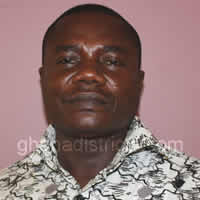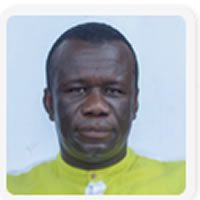Introduction
This chapter discusses the Population with Disabilities (PWDs) as recorded by the 2010 PHC data for Prestea Huni-Valley Muncipal. It describes PWDs with respect to disability type, locality of residence, activity status, education and literacy.
Population with Disability
Table 6.1 shows the population by type of locality, disability type and sex. Out of a population of 159,304, those with disability are 6,305. This means about four out of hundred persons in the District have one form of disability or another. Females with disabilities are slightly higher (4.0%) than males (3.9%).
Type of Disability
Table 6.1 shows the population by disability type and sex. The major type of disability in the District relates to sight with 52.8 percent, followed by physical disability with 24.6 percent. Among the types of disability that have been mentioned there are people who have Other Types of disability (7.3%)
Intellect as a type of disability is common to both males and females with the proportion to both sexes being 12.7 percent. Females are more inclined to emotional distress than males and this is proven by the data since the proportion of females with emotional distress (11.5%) is higher than males (10.2%).
Disability by locality.
Table 6.2 shows the population by type of locality, disability type and sex. In the rural areas more than four out of hundred persons have disabilities (4.5%) while in the urban areas about three out of hundred persons have disabilities (3.1%). The major type of disability in both urban and rural localities is sight. However whilst the proportion of the PWDs in the urban areas with sight disability is 53.2 percent, that of the rural area is 52.7 percent.
Besides sight, physical disability is common in both localities (urban-rural). More females have sight or are physically disabled than males in urban areas. The same pattern is observed in rural areas.
Disability and Economic Activity
Table 6.2 shows the number of persons 15 years and older with disability, economic activity status and sex. Whilst the percentage of PWDs to those without disability is 5.5 percent, the percentage of PWD that is employed is 5.2 percent and unemployed is 3.0 percent. This shows that there is a gap between the proportions of PWDs and non-PWDs that are economically active. The percentage of PWDs who are not economically active is 6.6 percent which is higher than the percentage of PWDs who are economically active. Males who are disabled but are employed represent 5.3 percent of disabled male population whilst 5.2 percent of disabled females are employed. Both males and females with sight disability but who are employed constitute 3.1 percent of other types of disability.
There are more females (7.0%) with disability than males (6.0%) who are not economically active. With the exception of intellect and other forms of disability, the variation associated with the types of disability of persons in relation to their economic status is shown in figure 6.3. The proportion of persons who have sight disability but who are economically active is higher (4.4%) than those who are not economically active (3.3%).
Speech as a form of disability does not prevent people from working since the proportion representing the economically active (0.9%) is higher than those who are not economically active. Physical disability has been proven to be a challenge to persons in relation to their economic status. Persons who are physically challenged are often not economically active as their proportion of 2.4 percent is higher than those who are economically active (1.6%).
Date Created : 11/20/2017 3:36:38 PM






 facebook
facebook twitter
twitter Youtube
Youtube TOLL FREE 0800 430 430
TOLL FREE 0800 430 430 +233 593 831 280
+233 593 831 280 GPS: GE-231-4383
GPS: GE-231-4383 info@ghanadistricts.com
info@ghanadistricts.com Box GP1044, Accra, Ghana
Box GP1044, Accra, Ghana